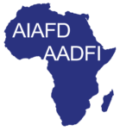
One of the most recurrent challenges when conducting research in Africa is limited availability and/or access to reliable data. Researchers and policymakers often lament the unavailability and/or the reliability of African data – even when available, data usually spans a short time period, casting doubts on research outcomes and raising ambiguity on policy recommendations derived therefrom. Another challenge often encountered by African researchers including Afreximbank Staff is the apparent inconsistency of key African macroeconomic and trade data derived from databases hosted by multilateral institutions such as the African Development Bank, IMF, World Bank or the United Nations—a situation that raises concerns and challenges, particularly as relating to the choice of one data source over another. As part of measures to address these challenges, and in furtherance of its objective to lead the promotion of African trade and consolidate its status as the Centre of Excellence in African Trade Matters, the Bank in 1998, initiated the development of a statistical compendium titled “Africa in Figures”. Broadly, the compendium covered time series data at country-level for a range of micro and macroeconomic, financial, demographic, and other key socio-economic variables, drawn from various sources.
